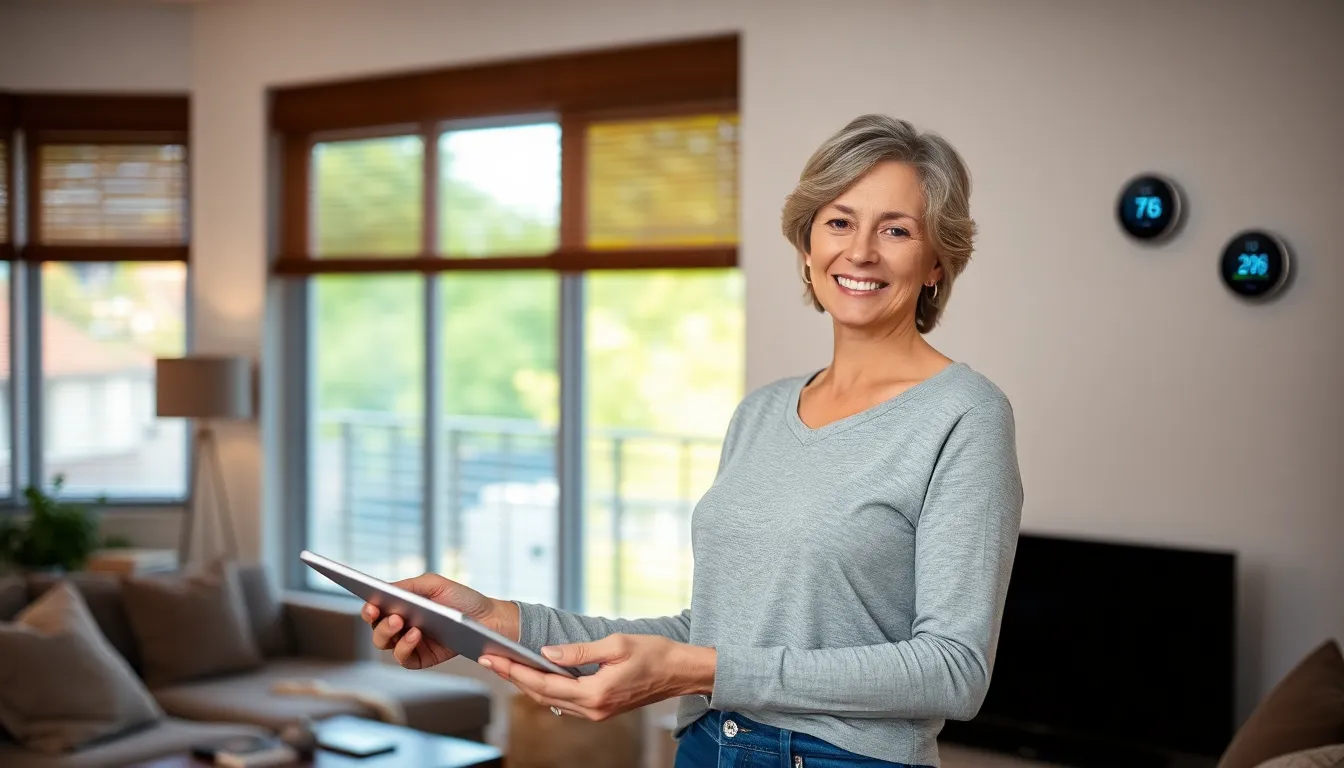Imagine waking up to the gentle hum of your coffee maker brewing your favorite blend while the blinds slowly rise to greet the morning sun. Sounds dreamy, right? Welcome to the world of home automation, where convenience meets technology. But before you dive headfirst into this futuristic lifestyle, it’s crucial to understand the costs involved.
Table of Contents
ToggleUnderstanding Home Automation Costs
Home automation involves various costs that require careful consideration. These expenses may vary significantly, depending on the chosen technology and the complexity of the system.
Initial Investment vs. Long-Term Savings
Initial costs often include purchasing devices, installation fees, and any necessary upgrades to existing infrastructure. Smart thermostats, security cameras, and lighting systems can range from $50 to $300 each. Despite these upfront costs, long-term savings frequently offset the initial investment. Energy-efficient devices, for instance, can lower utility bills by 10 to 30 percent. Enhanced home security systems can also decrease insurance premiums. Over time, the financial benefits often outweigh the initial expenses, making home automation a sound investment.
Factors Affecting Home Automation Costs
Several factors influence the overall expenses of home automation systems. Complexity of the system plays a crucial role; more sophisticated setups, like integrated smart homes, require higher investment. Type of devices chosen also affects costs; some brands may price devices higher due to advanced features. Installation complexity varies, with professional services costing between $50 and $150 per hour. Maintenance and updates also add ongoing costs, especially for systems connected to the internet. Lastly, changes in technology can impact future investments, necessitating regular assessments of home automation options.
Breakdown of Home Automation Expenses

Understanding expenses associated with home automation is crucial for informed decision-making. Various costs arise, from purchasing devices to ongoing subscriptions.
Hardware and Devices
Initial investments in hardware and devices typically range from $50 to $300 each. Smart thermostats, security cameras, and automated lighting make up common choices. Higher-end systems sometimes feature added functionalities, driving costs upward. For multiple devices, cumulative expenses can quickly add up. Investing in energy-efficient devices can yield long-term savings, making them a smart choice despite initial costs.
Installation Costs
Installation costs depend on the complexity of the system. Basic setups might incur minimal expenses if users opt for DIY installation. Complex configurations necessitate professional help, often leading to fees between $100 and $500. Each installation situation varies based on device type and existing infrastructure. Factors influencing these costs include labor rates and installation time required.
Subscription and Maintenance Fees
Ongoing subscription fees for cloud services and premium features can add monthly expenses. Typical prices for these services range from $5 to $30 per month. Maintenance costs may arise from regular updates and system checks. Some devices also require battery replacements or software updates, contributing to additional expenses. Evaluating these fees helps manage the overall budget effectively.
Comparing DIY vs. Professional Installation
Choosing between DIY and professional installation for home automation affects overall costs significantly. DIY systems generally require a lower initial investment. Devices purchased for DIY projects range from $50 to $300, making it an attractive option for budget-conscious homeowners. Labor usually involves only personal time and effort.
Expert installations involve various costs associated with skilled labor. Professional fees typically range from $100 to $500, depending on system complexity and time required. Experienced installers also bring knowledge that ensures systems function correctly and efficiently. Long-term reliability benefits often justify the higher price tag associated with professional services. Additionally, they typically handle device configurations and connections, which can save considerable time and frustration. Ultimately, the decision hinges on individual comfort levels with technology and budget constraints.
Typical Budget Ranges for Home Automation Projects
Understanding budget ranges for home automation projects helps homeowners plan effectively. Costs vary based on the complexity and type of systems chosen.
Low-End Solutions
Low-end home automation solutions typically range from $200 to $500. Smart plugs, basic lighting controls, and entry-level security cameras fall into this category. These devices require minimal installation and often feature user-friendly interfaces. Many homeowners opt for these solutions as an introduction to home automation without significant financial commitment. The affordability of these devices makes it easier to implement foundational automation features. As such, individuals looking to dip their toes into home automation can find options that enhance convenience at a lower cost.
Mid-Range Solutions
Mid-range solutions usually range from $500 to $1,500. This category includes smart thermostats, enhanced security systems, and integrated lighting controls. These systems often require professional installation for optimal performance. Many devices in this range offer advanced features like remote access, energy monitoring, and compatibility with various smart home platforms. Homeowners appreciate the balance between functionality and cost, making these options suitable for those looking to expand their automation capabilities. Investment in mid-range solutions boosts home efficiency and adds significant value.
High-End Solutions
High-end solutions can cost between $1,500 and $10,000 or more. Comprehensive systems encompass entire home automation networks that integrate security, lighting, climate control, and entertainment. Devices in this range often feature custom installation and advanced technology, providing seamless user experiences. Energy management systems and robust home security setups are common in high-end solutions. Homeowners seeking extensive automation benefits and customization usually prefer these options. The upfront investment may be substantial, but the long-term returns in efficiency and security often justify the cost.
Home automation offers numerous benefits that can enhance daily living. While the costs associated with it can vary significantly based on the complexity and type of systems chosen, careful planning can lead to a rewarding investment. Budget-conscious homeowners can explore low-end solutions while those seeking advanced functionalities may opt for higher-end systems.
Ultimately, understanding the full spectrum of expenses—from initial investments to ongoing fees—enables informed choices that align with both lifestyle and budget. Embracing home automation can lead to long-term savings and increased convenience, making it a worthwhile consideration for many.





